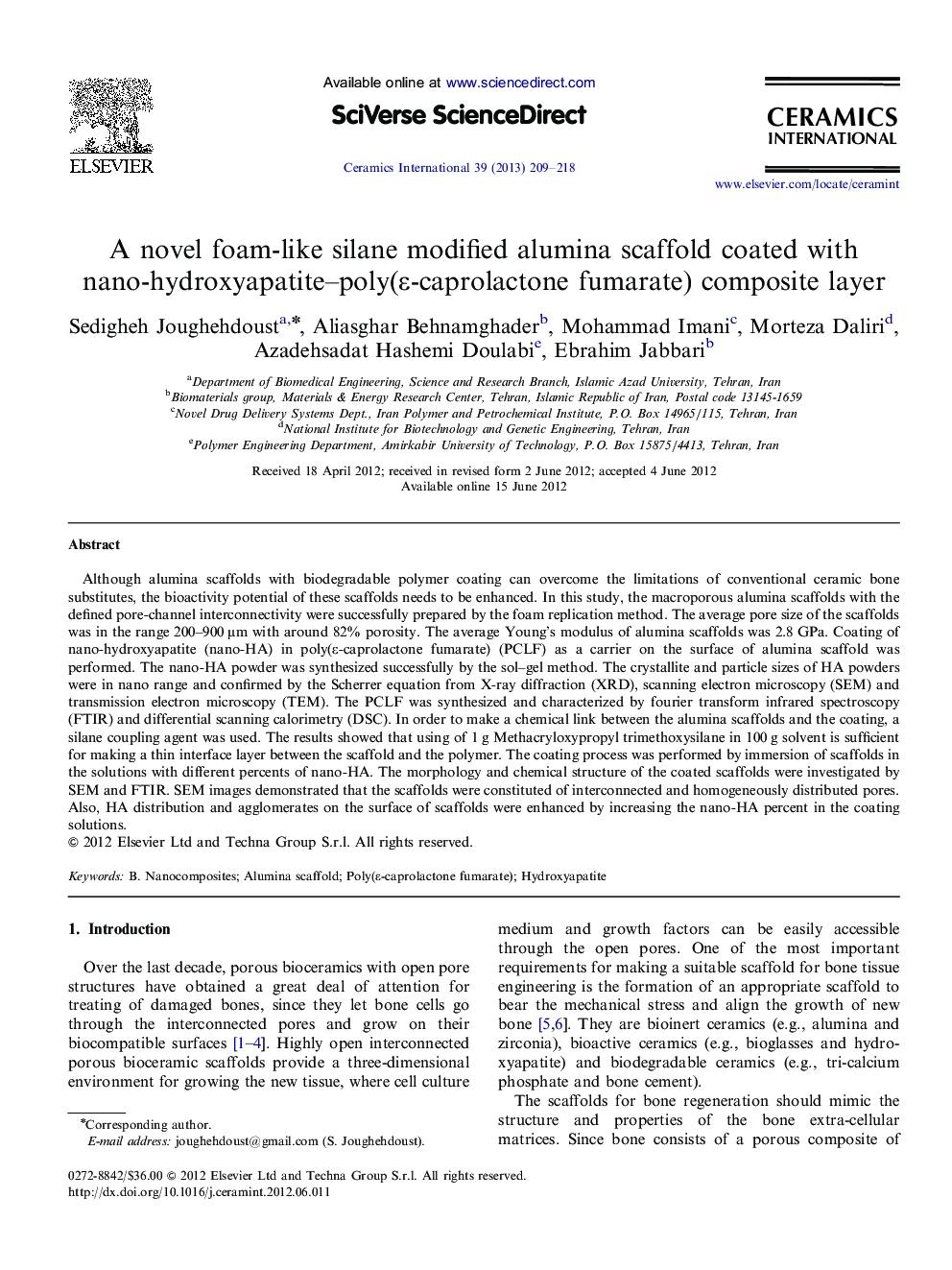| کد مقاله | کد نشریه | سال انتشار | مقاله انگلیسی | نسخه تمام متن |
|---|---|---|---|---|
| 1463451 | 989647 | 2013 | 10 صفحه PDF | دانلود رایگان |

Although alumina scaffolds with biodegradable polymer coating can overcome the limitations of conventional ceramic bone substitutes, the bioactivity potential of these scaffolds needs to be enhanced. In this study, the macroporous alumina scaffolds with the defined pore-channel interconnectivity were successfully prepared by the foam replication method. The average pore size of the scaffolds was in the range 200–900 μm with around 82% porosity. The average Young's modulus of alumina scaffolds was 2.8 GPa. Coating of nano-hydroxyapatite (nano-HA) in poly(ε-caprolactone fumarate) (PCLF) as a carrier on the surface of alumina scaffold was performed. The nano-HA powder was synthesized successfully by the sol–gel method. The crystallite and particle sizes of HA powders were in nano range and confirmed by the Scherrer equation from X-ray diffraction (XRD), scanning electron microscopy (SEM) and transmission electron microscopy (TEM). The PCLF was synthesized and characterized by fourier transform infrared spectroscopy (FTIR) and differential scanning calorimetry (DSC). In order to make a chemical link between the alumina scaffolds and the coating, a silane coupling agent was used. The results showed that using of 1 g Methacryloxypropyl trimethoxysilane in 100 g solvent is sufficient for making a thin interface layer between the scaffold and the polymer. The coating process was performed by immersion of scaffolds in the solutions with different percents of nano-HA. The morphology and chemical structure of the coated scaffolds were investigated by SEM and FTIR. SEM images demonstrated that the scaffolds were constituted of interconnected and homogeneously distributed pores. Also, HA distribution and agglomerates on the surface of scaffolds were enhanced by increasing the nano-HA percent in the coating solutions.
Journal: Ceramics International - Volume 39, Issue 1, January 2013, Pages 209–218